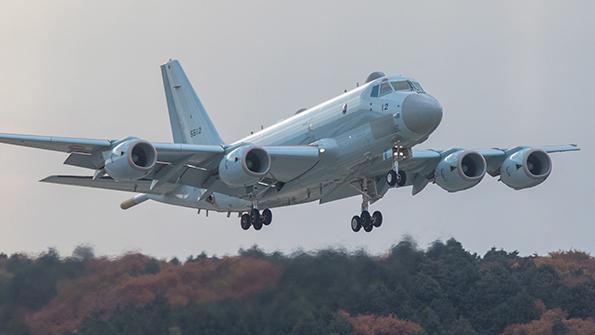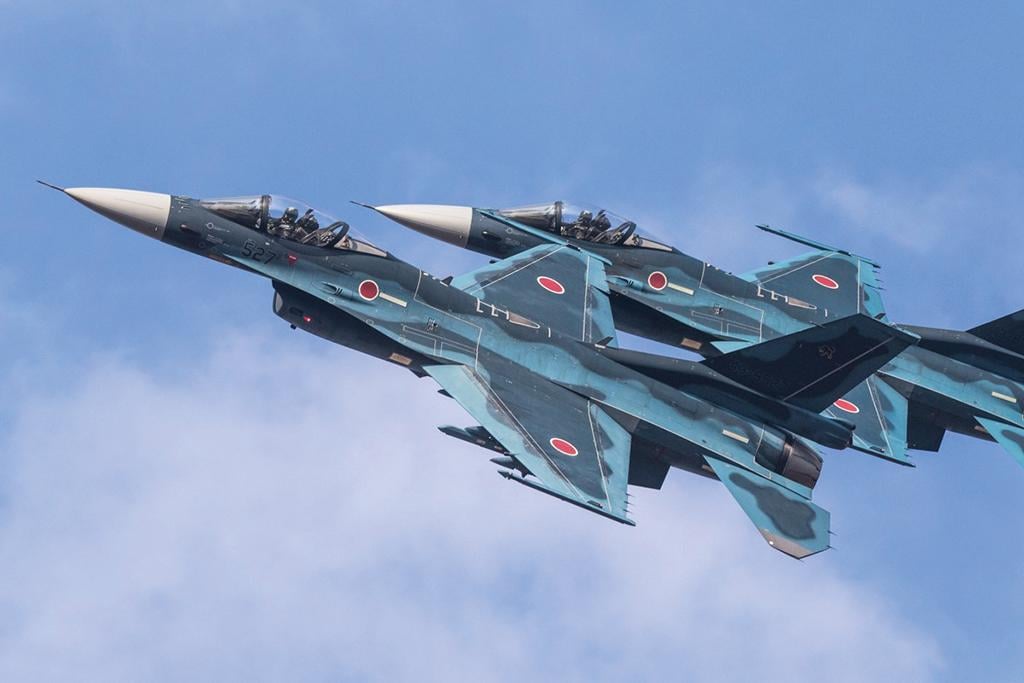
More than seven decades after the U.S. capture of Okinawa and its surrounding Ryukyu Islands turned the tide in World War II’s Pacific theater, the pivotal island chain is again in the spotlight. China’s increasing military might in the region has prompted Japan to focus its defenses on the 1,800-mi. arc between Kyushu and Taiwan—a decision that is already being strained by Russia’s return in the north to activities reminiscent of the Cold War.
Japan’s alignment with the U.S. defense posture, as well as its collective defense policy, has opened the nation to a more proactive role in times of military aggression, regardless of whether its security is directly under threat. With U.S. forces’ significant presence in Okinawa, it is widely accepted that the southern islands would be key targets in the event of a preemptive strike by Chinese or even North Korean missiles. This narrow island chain is porous and prone to surprise military actions.
Japan’s reports show Chinese naval movements began accelerating around 2012 and peaked in 2019. In December 2021, the Chinese Liaoning carrier group transited the Miyako Strait in Japanese territory south of the Ryukyus for drills in the Pacific, prompting the Japan Maritime Self-Defense Force to activate its own carrier, the JS Izumo, to shadow the Chinese activities.
- Japan is poised to defend Southern islands
- MV-22s and C-2s are designed to provide ground forces with rapid response
- Tokyo is funding upgrades to its Patriot Missile Defense System
A Japanese white paper raises concerns about the tension between China and Taiwan, saying any potential escalation of the situation will affect Japanese security directly. Japan has published that white paper once a year since 1976 and never has mentioned the impact of a conflict with Taiwan, indicating support for the self-ruled island against increasing Chinese activities behind Japan’s own backyard.
Under the previous Abe administration, Japan made defense of its remote southern islands a key priority and began to station new units and assets there. In 2020, Japan deployed Type-03 medium-range surface-to-air missiles and Type-12 anti-ship missiles to Miyakojima, an island south of Okinawa, in response to Chinese naval vessels and aircraft transits to the Pacific. Two years earlier, Japan stood up an Amphibious Rapid Deployment Brigade designed to protect or retake any of its islands against so-called “island-seizing” operations by aggressors.
Moving ahead, Japan has approved ¥774 billion ($6.8 billion) in additional defense spending, topping up a previously approved ¥5.34 trillion war chest, primarily to acquire and upgrade platforms to defend the south. Here is a look at what Japan plans to purchase:
Patriots
To defend its population and bases against potential ballistic and cruise missile attacks, Reuters reports that Tokyo is bringing forward the ¥36.6 billion upgrade of its MIM-104 Patriot air defense system to PAC-3 Missile Segment Enhancement standard three months earlier than planned. These weapons are primarily for the protection of Okinawa as well as the other Ryukyus. Japan has permanently deployed Patriot PAC-3 batteries in Okinawa since 2018 and already has four missile units there.
Also providing missile defense for the south are three Kongo-class Aegis missile destroyers-—JS Kongo, JS Chokai and JS Ashigara—based near Sasebo, all recently improved with SM-3s to provide enhanced ballistic missile defense.
Nonetheless, Tokyo remains undecided about the design and operational modality of the two new destroyers that will be equipped with Lockheed Martin’s SPY-7 Aegis radars, which initially were planned for shore-based operations. Funding for the ship’s design was not included in the recent defense budget.
C-2 and P-1
To strengthen its airlift capability, especially for emergency operations, Japan has earmarked ¥22.5 billion to acquire another Kawasaki C-2 airlifter. The Aviation Week fleet database estimates 14 C-2s are in service, replacing the venerable Kawasaki C-1s. The C-2s are crucial for the deployment of the Amphibious Rapid Deployment Brigade, as they can either carry a Type-16 wheeled tank destroyer or a Sikorsky UH-60 Black Hawk and troops across 4,500 km (2,400 nm) at maximum payload.
The recently delivered Bell-Boeing MV-22 Osprey will provide similar rapid-response capabilities for the brigade and further solidify interoperability with the U.S. Marine Corps Ospreys based in Okinawa.
Another ¥66.6 billion will be used to acquire three Kawasaki P-1 maritime patrol aircraft in response to the growing Chinese and sometimes Russian naval activities around Japanese waters. Just in October, 10 Chinese and Russian navy ships conducted a joint sail through the straits separating Hokkaido and Honshu, continuing southward between Kyu-shu and the Ryukyus.
Fighters
Two squadrons of Mitsubishi F-15DJs, supported by another F-15J squadron in Kyushu, provide air superiority over the Ryukyus. Two squadrons of Mitsubishi F-2s from Tsuiki Air Base fulfill naval and attack roles. Japan has budgeted ¥16.3 billion to further upgrade these aircraft to carry newer Type-12 anti-ship missiles. Under this larger domestic missile framework, Tokyo also is considering development of a submarine-launched Type-12 cruise missile variant with a range of up to 1,000 km (625 mi.).
The F-2s are expected to fly longer into the decade as Japan develops the replacement F-X fighter. The Boeing F-15J Japan Super Interceptor (JSI) upgrade is expected to make some progress but will be tabled for the next fiscal year’s defense budget. It will not have the Long-Range Anti-Ship Missile (LRASM) capability as initially planned, though. At the end of 2021, Boeing was contracted by the U.S. Defense Department for $471.3 million to proceed with the JSI upgrade, along with four weapon system trainers. The contract is planned to run until 2028.

The south is expected to receive a boost in fighter capability when Lockheed F-35Bs are delivered beginning in fiscal 2025; they reportedly will be based at Kyushu’s Nyutabaru Air Base. These aircraft eventually will operate from Japan’s new Izumo-class aircraft carriers, which recently were modified to house them. The Izumo became the first Japanese carrier since the end of World War II, when USMC F-35Bs commenced deck operations Oct. 3, 2021.
But Japan’s focus on its southern islands has it stuck between a rock and a hard place. Not only does Japan have to contend with the Chinese military’s growing prowess in the south, but its traditional Cold-War threat from Russia has resurfaced in the north. Sino-Russo joint operations can complicate the situation further, and the possibility of North Korean missile tests toward the Sea of Japan are yet another wild card.
In the meantime, Japan is stepping up its global military affairs as a member of the Quad Alliance with the U.S., Australia and India and recently signed the Australia-Japan Reciprocal Access Agreement in areas of joint training and long-term deployment of assets.
Tokyo has the difficult task of prioritizing and allocating funds and assets, and while the security environment appears to be more serious toward the south, Japan’s problems are multi-faceted and could be made worse without increased support from U.S. forces should Russia further strengthen its presence in the Pacific.





